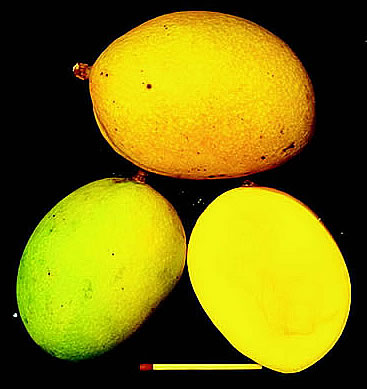
This cultivar variety, type is also referred to as Harumanis and it originated from Indonesia. It is widely planted in humid parts of the world where many cultivars of better quality fail to fruit.
The small, oval to oblong longer than broad fruits are yellow with large yellow-white dots and a rounded base. On average they are 8.3 cm long and 6.3 cm broad and weigh 95–190 g at Mwea in Central Province. The beak a pointed projection at the tip of a fruit is inconspicuous and the skin is thin and tough. The flesh is firm and juicy with little fibre. It is lemon yellow, sweet, slightly insipid with a strong aroma, but with only poor to fair eating quality. The polyembryonic mode for reproduction: contains more than one embryo; produces true-to-type progeny seed is covered in a thick woody shell.

The tree is vigorous and tall with a slightly open canopy crown of a plant. It bears in January but there is a tendency towards low yields and biennial bearing. Resistance to powdery mildew and anthracnose is only low to fair.
The cultivar has not adapted well at an altitude of about 1080 m in Mwea and should be tried in other agroclimatic zones to achieve better results.